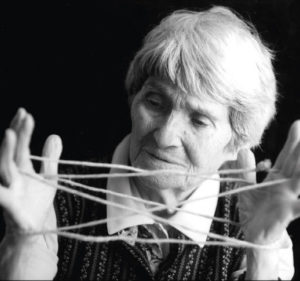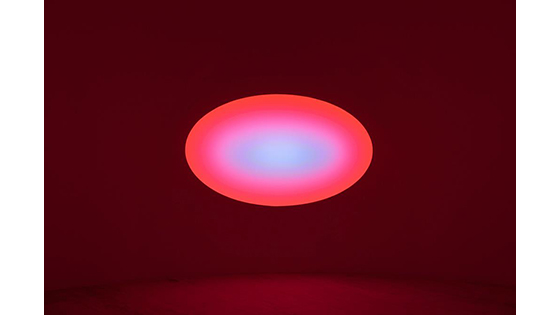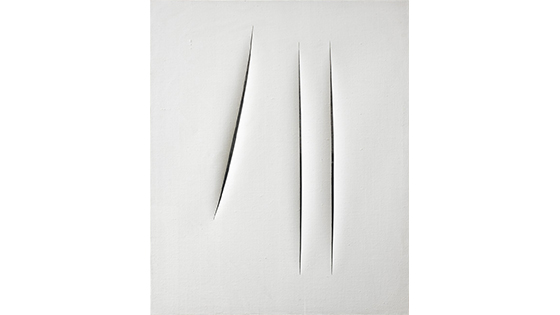Originally scheduled to begin on March 20, Olafur Eliasson’s exhibition at the Museum of Contemporary Art Tokyo opened on June 19. As neither the artist nor the staff of Studio Olafur Eliasson were able to come to Japan due to Covid-19, the exhibition, which involved the installation of 12 rooms of works including six rooms of new ones, was realized by communicating remotely.
The title of the exhibition, Sometimes the river is the bridge, suggests the possibility of bestowing form and function onto formless things—like invisible rivers that may appear to be bridges with a particular form and function, when viewed from a different, alternative perspective. Inspired by the theme of sustainability, this exhibition takes its point of departure from Eliasson’s interest in the environment, as reflected in how he has voiced his opinions at the United Nations as well as through projects like Little Sun (2012–) and Ice Watch (2014–). It is the result of a two-year dialogue with curator Yuko Hasegawa, partially in relation to the tsunami that occurred in the Tohoku region of Japan in 2011.
Eliasson, who is known for his work with water, fog, light, and other natural phenomena, deploys a unique artistic language that gives form to intangible and richly varied materials. In this exhibition, his specific intention was to shift the focus to the viewer’s ecological awareness: in other words, to imbue the perceptual experience with a different meaning or realization. What is unique here is not just the theme of the exhibition: the sustainability theme is also reflected in how it was produced. Consciousness of the carbon footprint associated with the act of staging the exhibition was manifested in how transportation was minimized by increasing the number of components that were locally produced, the choice of the means of transportation, and the use of renewable energy in the exhibition itself. Works were transported from Berlin to Tokyo not by air, but by train and boat via the Trans-Siberian Railway. 12 new drawings from a series called Memories from the critical zone (Germany–Poland–Russia–China–Japan, nos. 1–12) were automatically executed by a drawing machine as a result of the vibrations during the journey.
In addition, the light sculptures are powered by solar panels, while Sustainability Research Lab showcases the products of materials and designs that the studio has experimented with and developed, sometimes in collaboration with outside experts. The ecological and aesthetic ingenuity of the studio’s waste-based recycling processes are examined from multiple angles, becoming a statement about how the future should not just be waited for, but actively embraced and welcomed. As Eliasson himself says, “for me, all of these works articulate and express the future.”
The highlight of this exhibition is a new large-scale installation in the 20-meter long atrium space, called Sometimes the river is the bridge. A basin of water is placed in the center of the darkened space, while the reflections of twelve lights illuminating the surface of the water create various shadows on the circular screen wall above. The ripples caused by the gentle stirrings of the water surface take on a variety of forms, inviting the viewer to partake in a state of deep contemplation that resonates with these water ripples. This is not just an individual sensory experience, but also a medium for empathy with others who share the same space. Eliasson’s work takes into account the neo-materialist discursive nature of things: through the material structure of his work, he explores ways of creating a space of empathy that is accompanied by thought. In a certain sense, this particular work might be said to have achieved this goal.
In other works, such as photographs that capture the changes in Iceland’s glaciers over a period of 20 years, or documents of an intervention that causes a river to appear within a city, Eliasson deploys methods that promote awareness and knowledge production through form and space by understanding the structures external to our living spaces, such as architecture and landscapes, as elements of nature and climate. These methods are integrated into the theme of sustainability, welcoming many visitors as an exhibition that entails “feeling and thinking.”
Bilingual catalogue in Japanese and English, including photographs documenting new works, with a dialogue between Eliasson and Timothy Morton, a discussion by the Studio staff on sustainability, and an essay by Yuko Hasegawa on “Eliasson: The Artist who Listens to the Future.” (Film Art, Inc.)
Curator: Yuko Hasegawa
Organized by Museum of Contemporary Art Tokyo operated by Tokyo Metropolitan Foundation for History and Culture / The Sankei Shimbun
Supported by Embassy of Iceland, Japan / Royal Danish Embassy
Sponsored by Kvadrat, Bloomberg L.P., JINS HOLDINGS Inc.
Grant from The Scandinavia-Japan Sasakawa Foundation, Obayashi Foundation
Olafur Eliasson
Sometimes the river is the bridge
June 9–September 27, 2020
Museum of Contemporary Art Tokyo (MOT)
4-1-1 Miyoshi, Koto-ku
Tokyo 135-0022
Japan
Image: View of Olafur Eliasson, Sometimes the river is the bridge, Museum of Contemporary Art Tokyo, 2020. Photo: Kazuo Fukunaga. Courtesy of the artist; neugerriemschneider, Berlin; Tanya Bonakdar Gallery, New York / Los Angeles. © 2020 Olafur Eliasson
source: e-flux



















